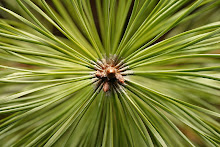Monday, November 30, 2009
Do you know when Santa Claus became the Santa we all know and love today?
American caricaturist and illustrator German-born Thomas Nast (1840-1902) is credited with creating our popular image of Santa Claus. He had an illustration of Santa visiting the troops during the American Civil War in the January 3, 1863 edition of Harper's Weekly. Santa was pictured sitting on his sleigh harnessed up to his reindeer, he has a long white beard, and a furry hat, collar and belt. Along with Clement Moore's 1822 tale "A Visit From St. Nicholas" or later to become "The Night Before Christmas," Nast's image of Santa Claus brought about the endearing image of the furry old elf cherished by children for 140 years.
Santa Claus in America is a product of the great American melting pot of cultures and traditions from around the world. His earliest ancestors date back to pre-Christian times when gods who ruled the earth soared through the skies in their fiery chariots or other flying transport. But the human qualities of Santa Claus were first influenced by St. Nicholas of Myra (now Turkey) who was a 4th century bishop, devoted to children and the needy, he became legendary for his kindness and generosity. He was said to have left bags of gold in stockings that had been hung by the fire at night to dry. He became the patron saint of children, orphans, sailors, students, even thieves and pawnbrokers as well as the countries of Russia and Greece.
The date of St. Nicholas's death, Dec. 6th, became an annual feast and came to mark the beginning of the medieval Christmas season. On that eve, children would set out food for the saint, straw for his horses and schnapps for his attendant. The next morning obedient children awoke to find their gifts replaced by toys and treats, while bad boys and girls found their offerings untouched and a bundle of switches left alongside. St. Nicholas's Day is still celebrated in many countries. After the Reformation in the 16th century and the veneration of Catholic saints was banned, St. Nicholas was merged with other Christmas celebrations and the venerated gift bearer adopted a more non-religious form
In Germany he became known as Weihnactsmann, in England he was known as Father Christmas and in France as Pere Noel. There were also Santa's attendants or helpers such as Knecht Ruprecht and the Belsnickle, both fearsome characters who carried switches to punish naughty children. There was also Black Peter who delivered his gifts down the chimney getting covered in soot. Santa was also known as Ru Klaus or Rough Nicholas because of his rough appearance, Ash Nicholas because he carried a sack of ashes along with the switches, and Pelznickle or Furry Nicholas. One attendant who wasn't scary was known as Christkindl or Christ Child who was said to accompany St.Nicholas in many countries.
In the 1600s Dutch immigrants to America introduced Sinterklaas or St. Nicholas and Sinterklass in time became Santy Clauss. Up to 1863 when Thomas Nast was asked to illustrate Clement Moore's tale, which incidentally is where the reindeer and sleigh replaced the horse drawn wagon, the color of Santa's suit and his overall appearance were open to interpretation with a wide variation. But with "The Night Before Christmas" and Nast's now famous illustrations, the world saw a jollier Santa, dressed all in red with his home at the North Pole. Nast contributed his annual interpretation of the magical world of Santa Claus for 23 years with his annual drawings for Harper's Weekly magazine shaping the merry old gentleman as we came to know him.
But I bet you didn't know that a soon to be famous American consumer product added the final touches to the modern day Santa Claus! What was it? Well in 1931 American artist Haddon Sundbloom's advertisements for Coca-cola featured the jolly figure of Santa Claus with his red ruddy cheeks, twinkling eyes and round portly belly and this image has stuck in the world's identification of the man known as Santa Claus ever since.
I am presenting here a sampling to show the wide variation of what Santa Claus looked like to the Victorian audience through the post cards of the time. Enjoy this trip back in time!
I wish to thank billcasselman.com and NorthPoleSantaClaus.com for their input in composing this blogpost.
Subscribe to:
Post Comments (Atom)








































Wonderful post, Maureen! And great images, too. Thanks so much for sharing both.
ReplyDeleteYou really spent a lot of time gathering information for this post Maureen. Very interesting. Thanks for sharing the great images.
ReplyDeletefabulous post, Maureen!
ReplyDeleteTook my son to Epcot for his birthday yesterday & each "country" in their World Showcase had storytelling actors playing that countries version of Santa (or similar legendary character). I think you would have enjoyed it
Wow this is a lot of information of old Santa, fun to read and the images are wonderful...I am a fan of the old time Santa myeslf...but I will take the jolly man any way.
ReplyDelete